This is just a photo comparison of the water garden. As of the last update (4/10/17), this is what it looked like:
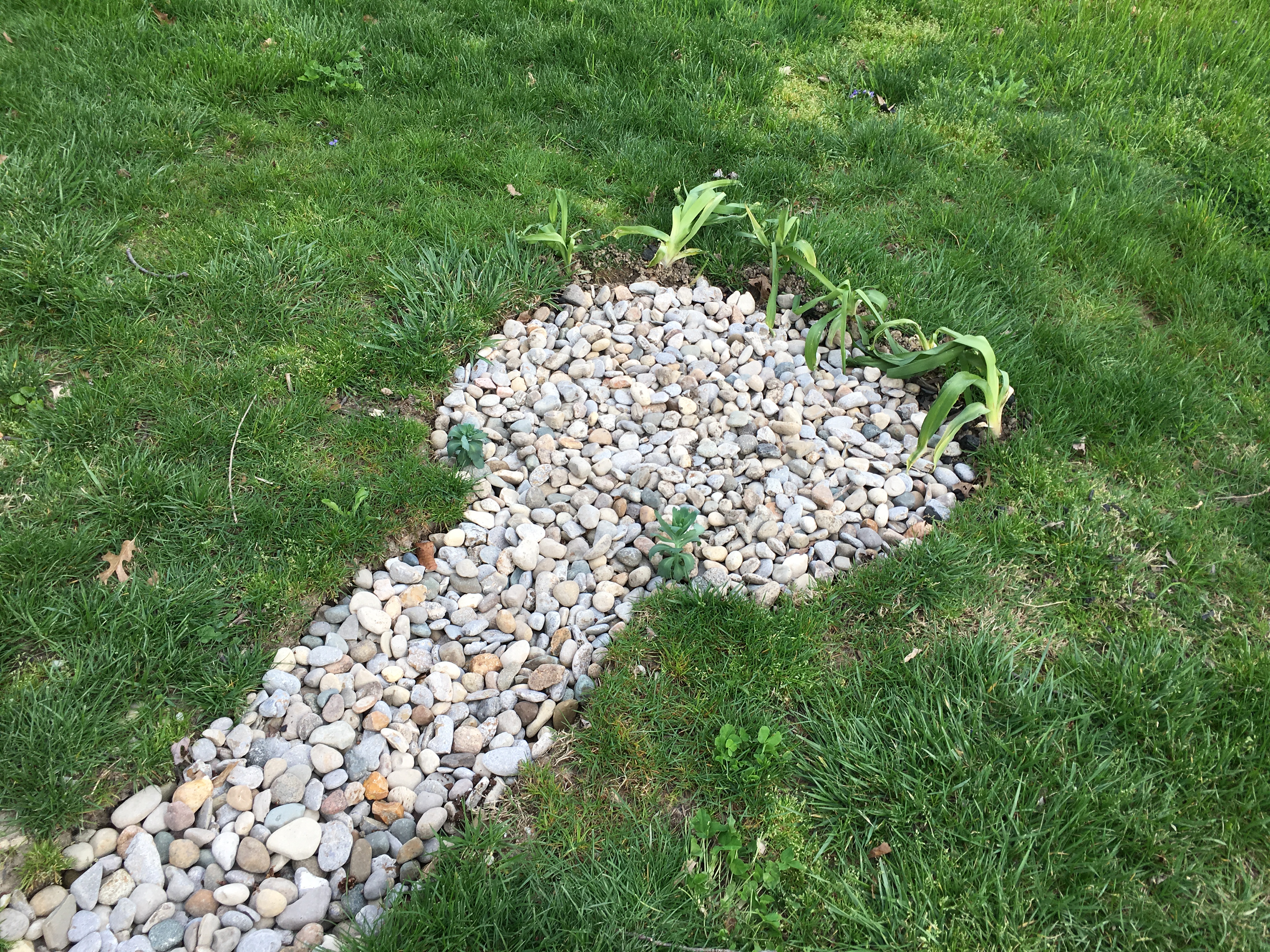
And here it is as of 5/25/17:
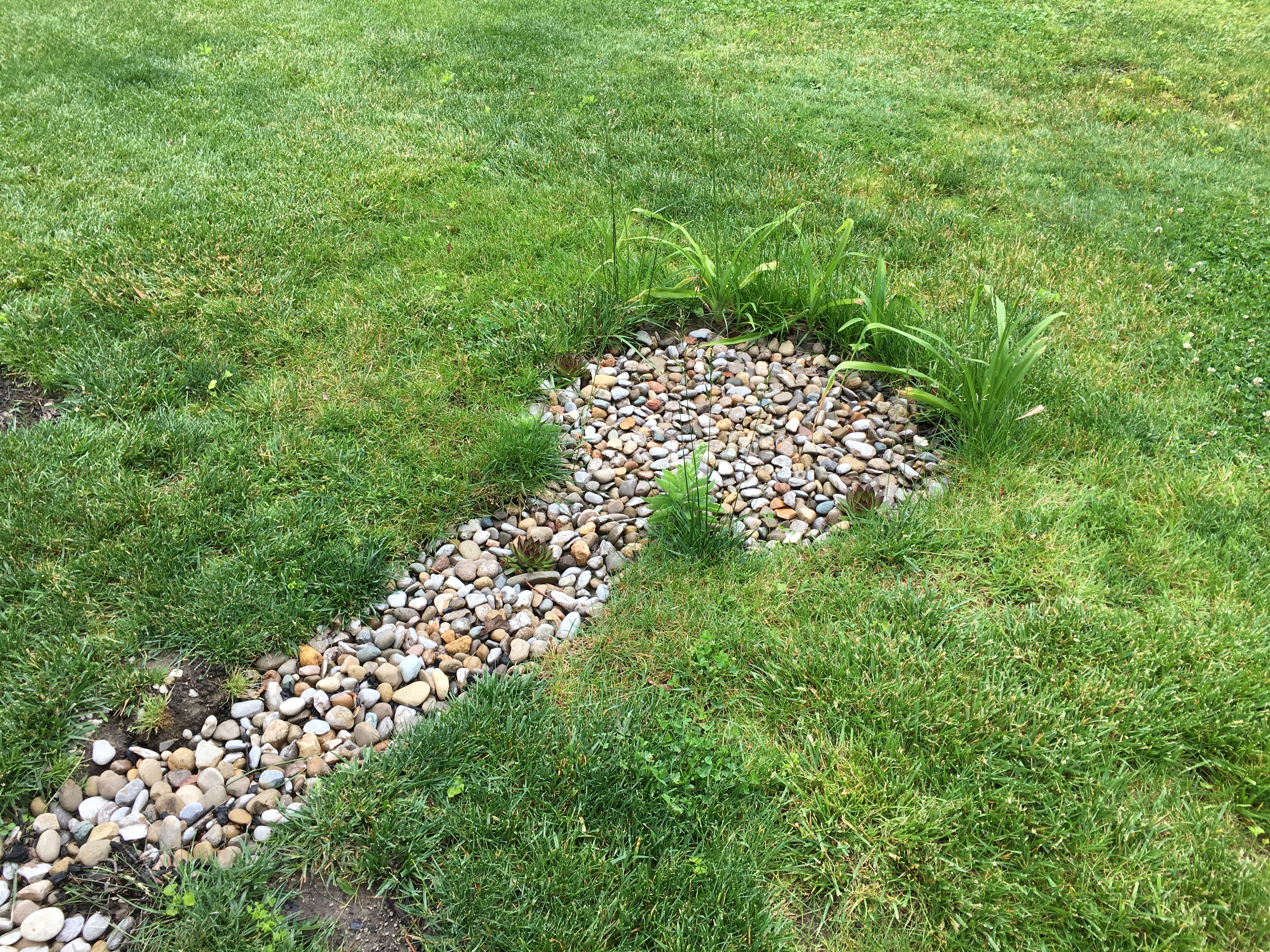
–Simon

Tales from Easement Acres
This is just a photo comparison of the water garden. As of the last update (4/10/17), this is what it looked like:

And here it is as of 5/25/17:

–Simon
Since the vegetable garden got decimated by frost, I was forced to do something I’ve never done before: buy tomato plants. I’ve purchased seed of course, and the first year we were in our last townhouse my mother-in-law gave us two tomato plants, but never before have I purchased them at a store. And once I grow a plant, I save seed–partly out of a sense of self-sufficiency and the desire to maintain my own seed stores, partly to discover new hybrids, and partly because the germination rate on saved seed is significantly better than store-bought (not to mention free).
But with over half my tomato plants dead, and since I didn’t get the chance to put in a vegetable garden at the new house last year, this year I was going to have tomatoes dammit! So when the local Lowe’s started putting them on sale, I relented.
Normally I don’t get tomatoes until July, but here I am with a single tomato, growing from the heirloom yellow lemon variety:
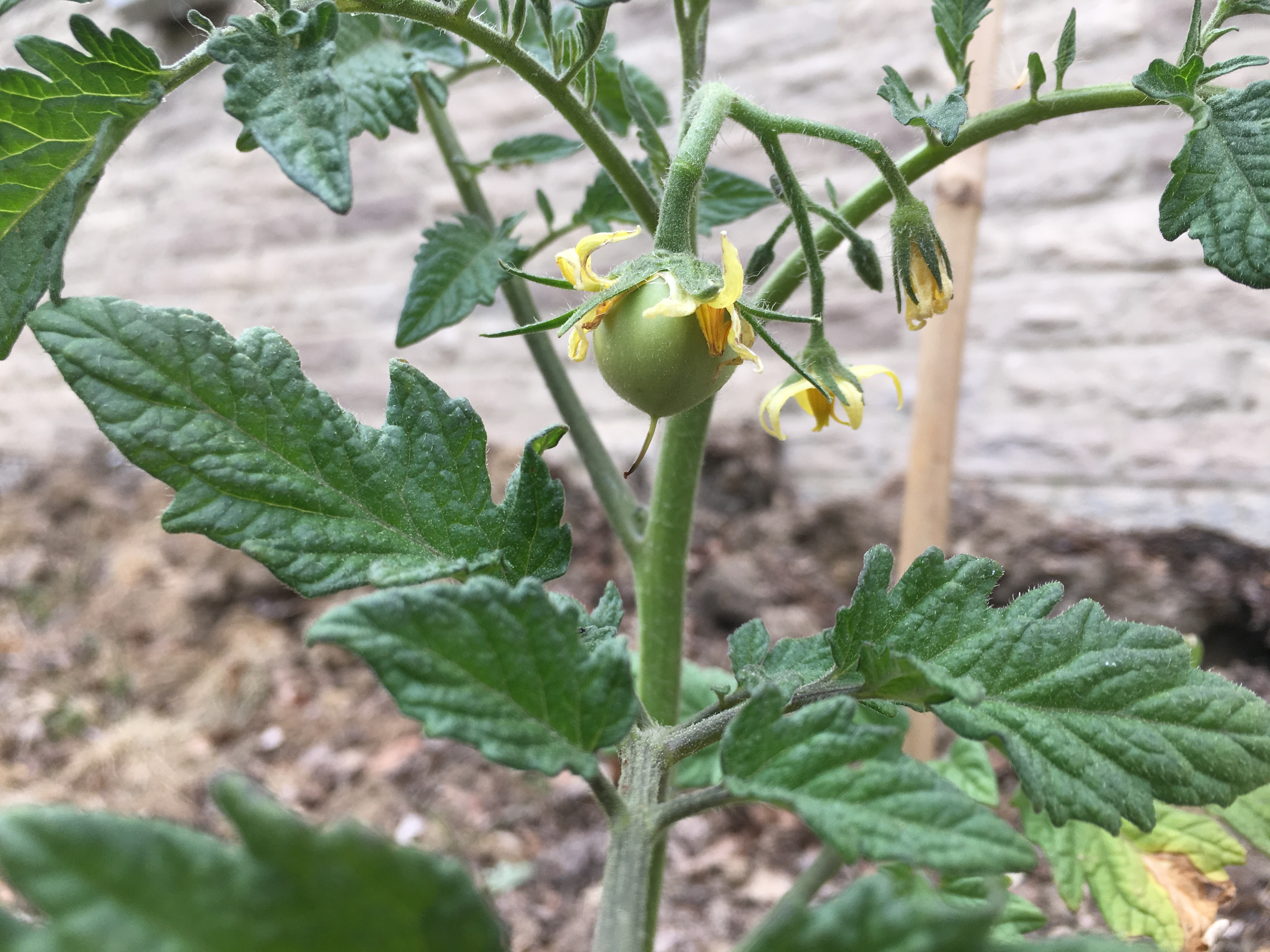
I suppose since I’ve recently depleted my canned tomato stores, that I can forgive myself just this once.
–Simon
If I’m going to be feeding the wildlife, then I think it’s only fair that I get to eat it. But nay, the ODNR has restricted when and where I can hunt these voracious little creatures which chew through my garden like a clever simile. And when have rabbits ever been in danger of extinction?
To be fair, I wasn’t planning on eating that kale. Yuck. But it was big and green and happy, and they didn’t have to eat the entire plant. Rabbits just don’t respect sustainable resources.
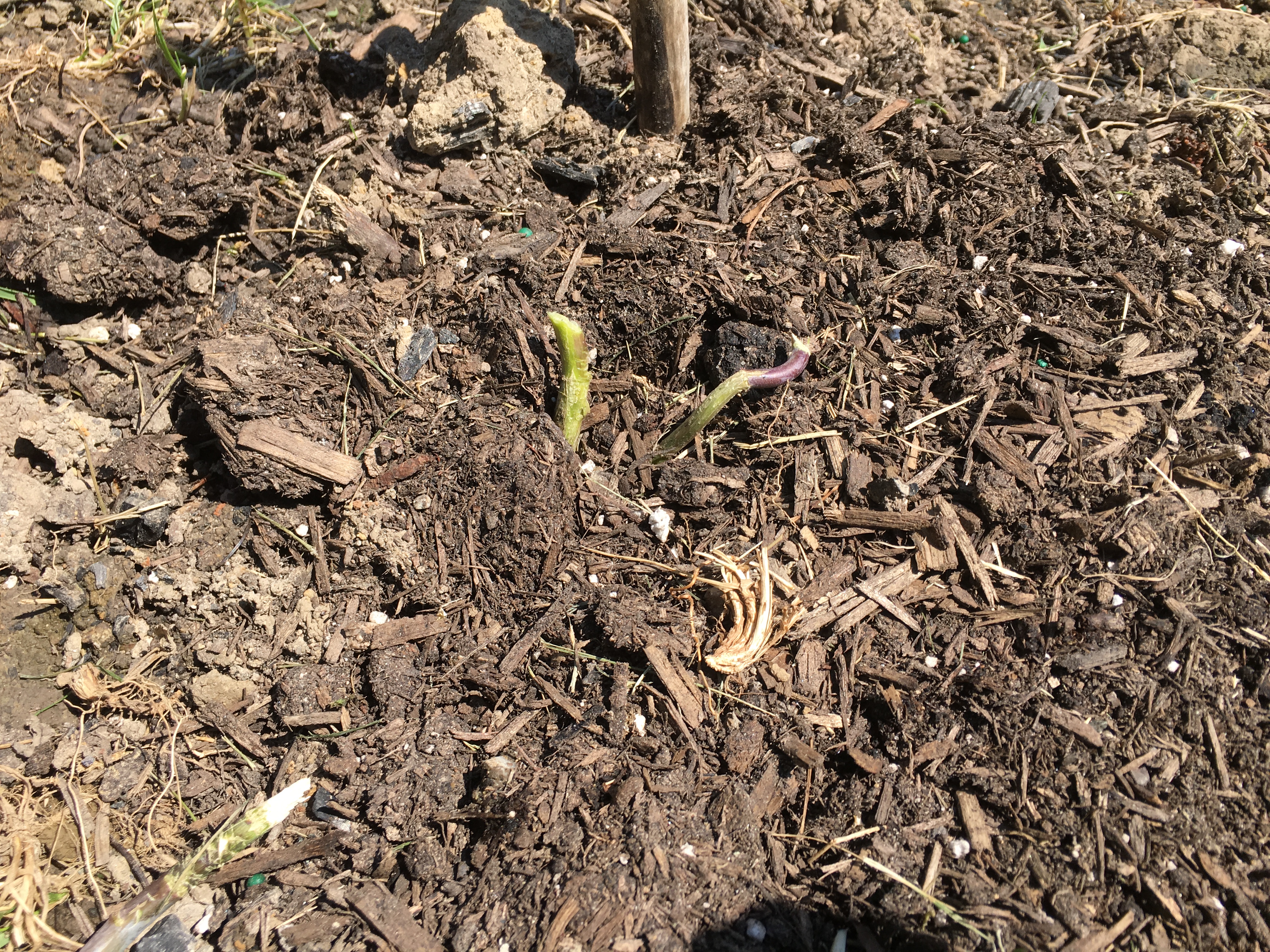
In other news, the thyme plant I grew from seed years ago, having lived in a pot and being the only source of fresh thyme to an apartment-dweller, bloomed. I had never seem thyme bloom before. It would seem that the plant had gotten old enough that it finally had the energy reserves needed to procreate.
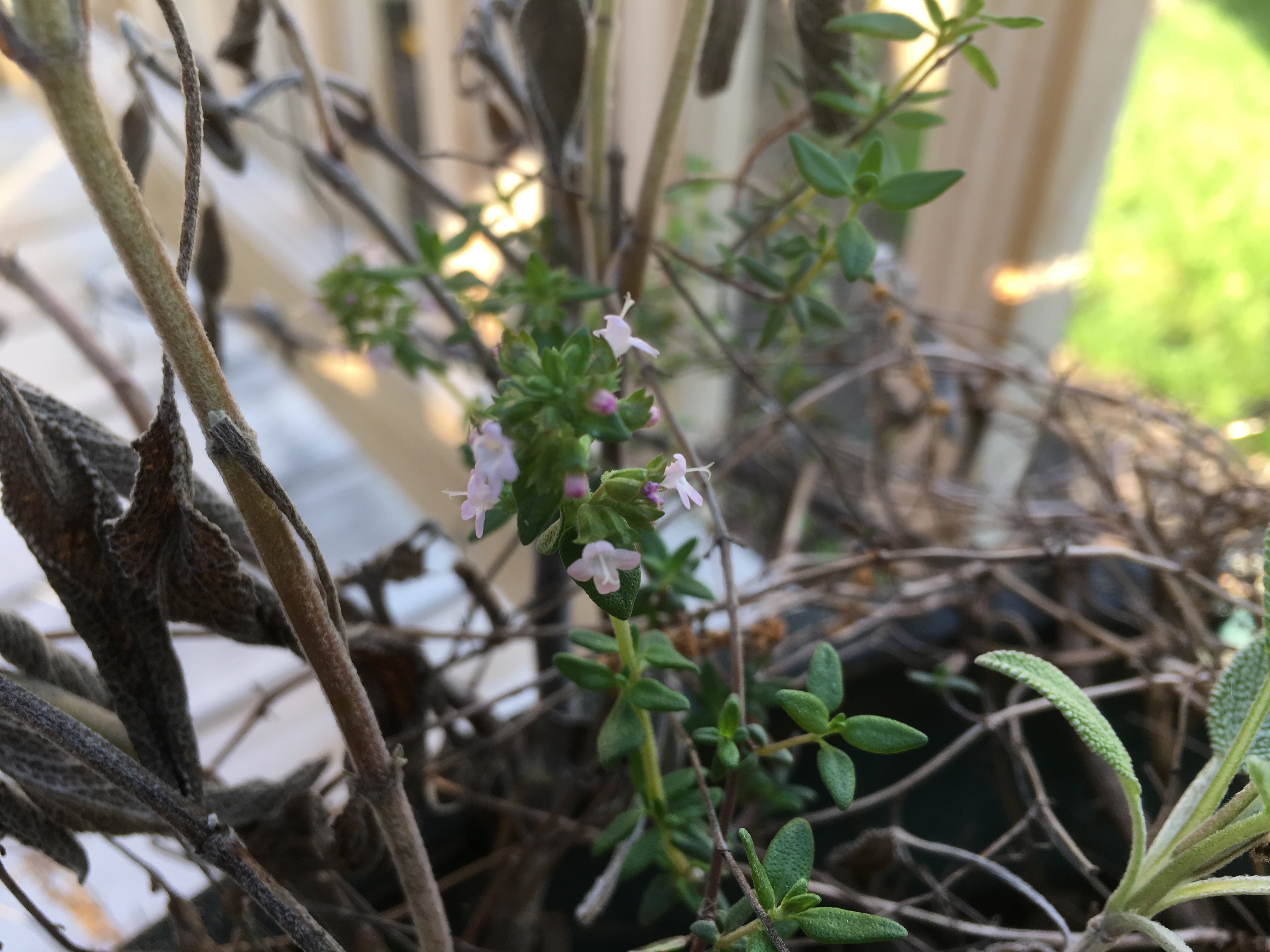
I wonder if thyme can stand up to foot traffic. The stuff seems to endure through the worst environmental conditions that Ohio can throw at it. It sure would make a nice-smelling replacement for grass.
–Simon
Damn weather. Sure enough, the frost 4 days after last frost took out the basil, peppers, and half the tomatoes. This sets my garden back a month.
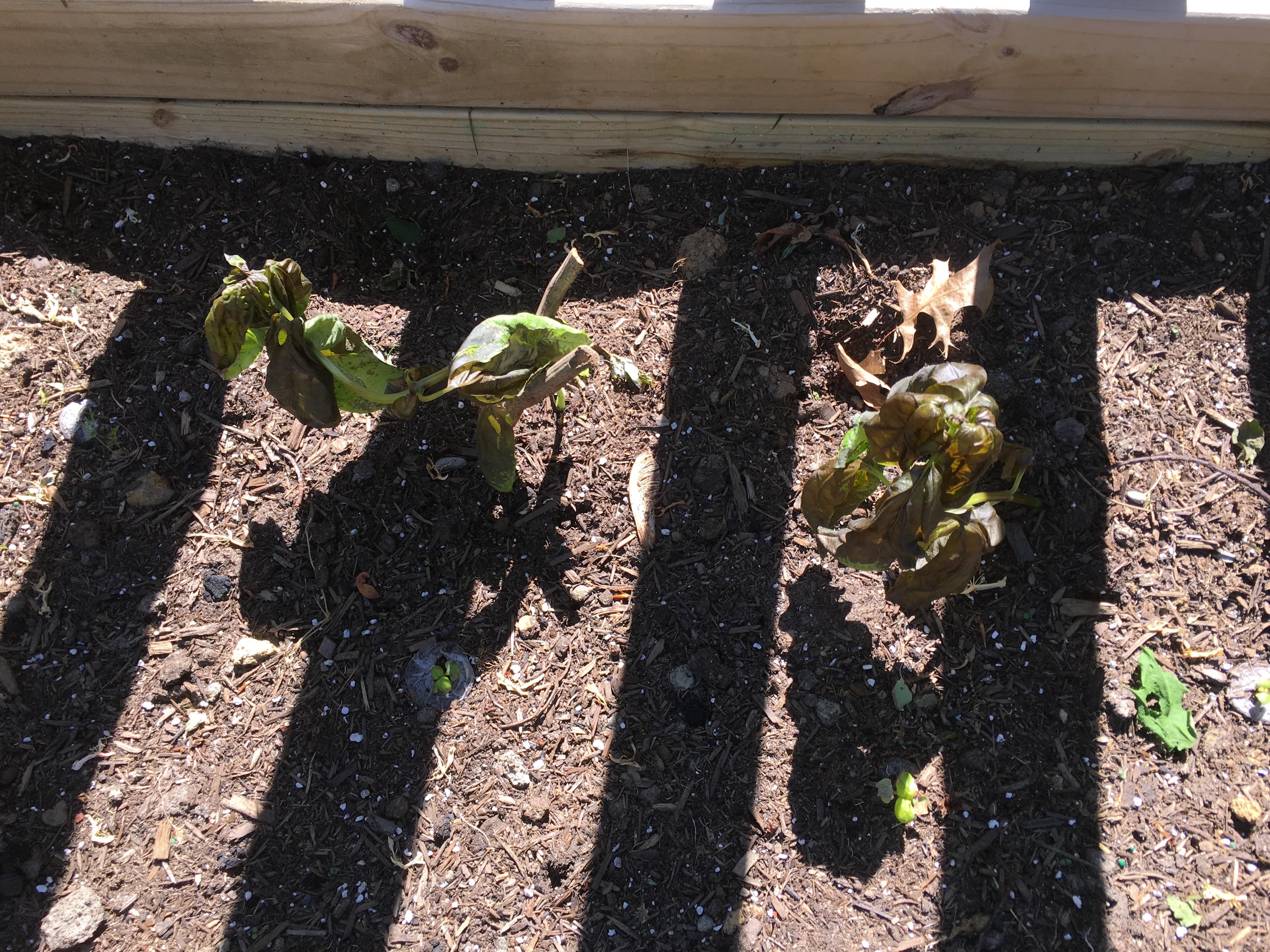
I realize in a fortnight I’ll be complaining about the heat, but would it friggin warm up already?!
–Simon
Like any gardener, I consult the frost dates when deciding to plant. April 19 was our average last frost, so a 50% probability that after this date, there will be no more freezes. 50% is not a good bet with my tomatoes, and I’ve been burned by this in the past (or rather frostbitten), so I go off the later date: the guaranteed last frost date, or whatever they call it. It seems to go by more than one name, but it’s basically the almost certain guaranteed date after which there will be no more frost. Ours was May 3. The weekend after, I planted my tomatoes.
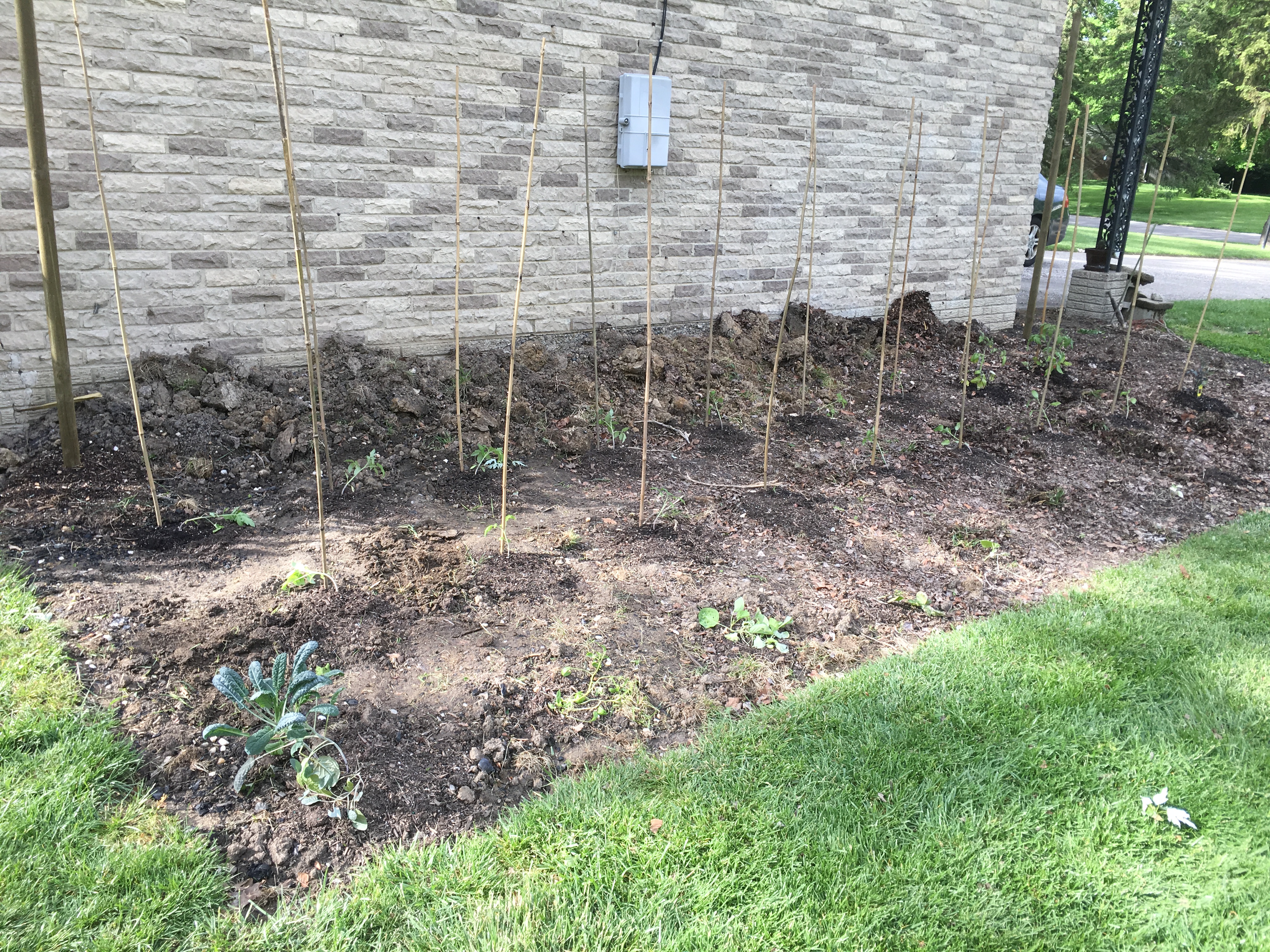
That weekend, Sunday night–last night, May 7, the weather report predicted a low of 34. But, there was no frost advisory. It would be cutting it close, but ultimately after an exhausting weekend, I lacked the energy to consider going out and covering my tomatoes. I trusted to fate.
This morning, as I rolled the trash to the curb, I noticed with dismay that there was frost upon the grass. I quickly inspected my tomatoes. One appeared frostbitten, but the others did not. I noted that the line of frost only just barely touched the edge of my garden.
The coldest period of the night was 6-7AM. This was the time during which I was reviewing my garden, so it is possible that I was seeing the worst of things. The garden is against the garage, so maybe enough residual heat leached from the house to keep the garden thawed.
The Farmer’s Almanac had this to say about the date:
‘You are almost guaranteed that you will not get frost’
Apparently “almost” is the key word. After work, I go home to determine the damage. And I hope that one night has not destroyed 6 weeks of indoor growing preparation for my first garden at the new house.
–Simon